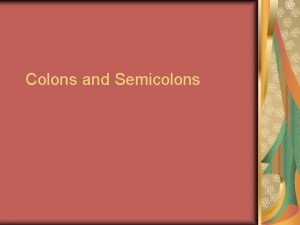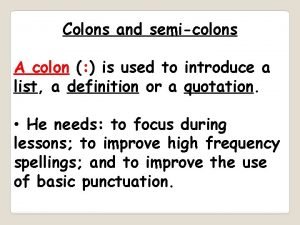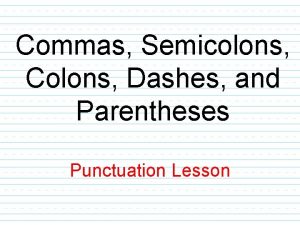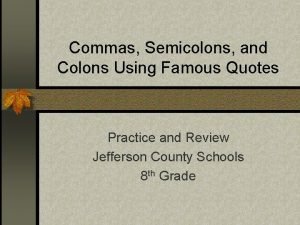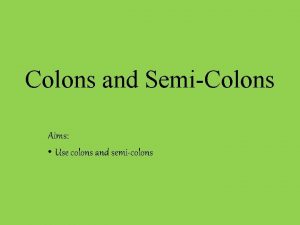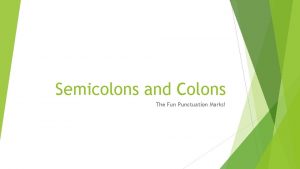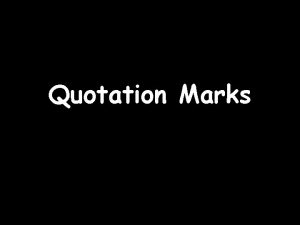Quotation Marks Colons Semicolons Quotation Marks Direct Quotes







- Slides: 7

Quotation Marks Colons Semicolons

Quotation Marks: Direct Quotes 1. Use quotation marks (“) to signify a direct quote. ● “I love Auburn, ” said the instructor.

Quotation Marks: Short Works of Literature 2. Use quotation marks (“) to signify a short work of literature or a speech. Also, use single quotation marks (‘) when the title of a short work is inside a person's quotation. ● Martin Luther King’s speech, “I Have a Dream, ” is a great speech. ● “I have not read, ‘Harry Potter and the Sorcerer's Stone, ’ said the student.

Do not use quotation marks for indirect quotes. 3. Do not use quotation marks for indirect quotations because they do not contain someone’s exact words. Conjunctions like that, if, who, what, and why often introduce indirect quotations. ● Henry said he did not want to go to the basketball game. ● Jennifer asked if she could help me.

Colons 1. Use a colon to introduce a list or series. ● The following foods are my favorite: pasta, chicken, steak, and fish. 1. Use a colon to separate hours and minutes. ● The time is 12: 13 PM.

Semicolons (part 1) 1. Semicolons separate independent clauses that are NOT joined by a conjunction. Usually, semicolons are used in place of periods when the two independent clauses are closely related. ● The salesman sold three cars; he was very happy! 2. Semicolons separate independent clauses that are joined by sentence interrupters (for instance, nevertheless, besides, moreover, instead, besides, etc. ). ● The streets were very busy; nevertheless, the police were able to rush to the crime scene.

Semicolons (part 2) 3. Semicolons are sometimes used to split independent clauses when there are several commas inside the clauses. ● Mr. Trump, a writer, announced his new horror, mystery, and science fiction series; yet the books, oddly enough, had not been written. 4. Semicolons are used if a colon precedes items in a series when the items include other punctuation such as commas separating phrases. ● These athletes were all participating in the national competition: Judy Smith, a world class diver; Joe Evans, a champion weight lifter; and Sherry Sams, an Olympic gymnast.
